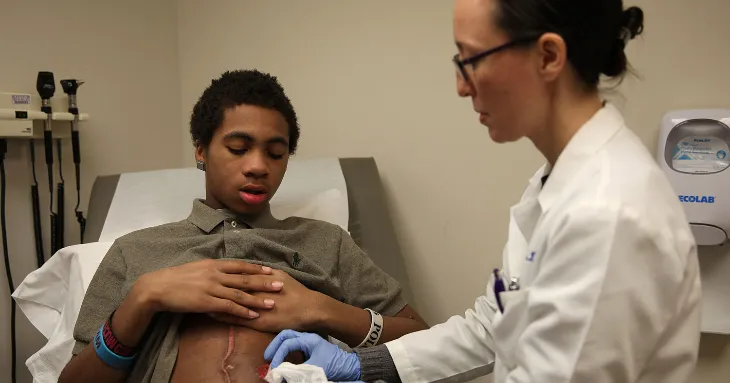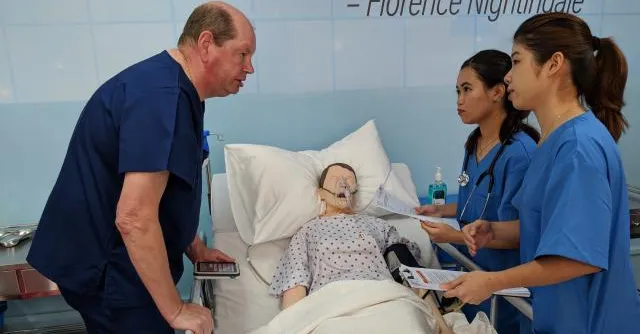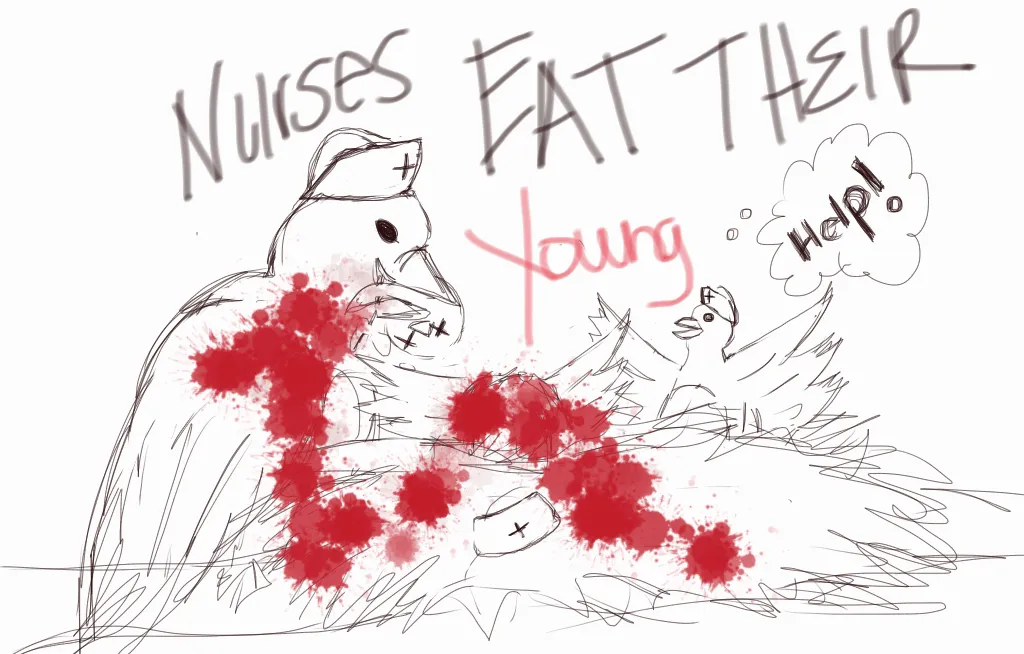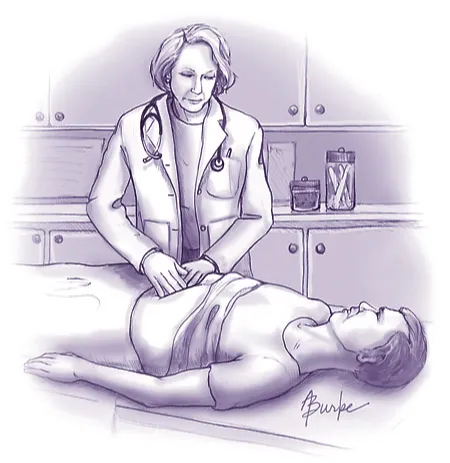Latest Entries Journal of Nursing

From Classroom to Community: Teaching Stress First Aid
Tags: first aid mental health Nurse Education Stress among Nurses wellbeing
This narrative describes an initiative to teach nursing students the Stress First Aid model to promote mental wellbeing and resilience in nurses. Students found the value in SFA, they taught older adults stress management skills they learned.
Read More →
The Challenges of a CVICU Nurse and The Toll of Burnout: The Bedside Nurse Perspective
Tags: menal health nurse burnout nurse well-being
The Cardiovascular Intensive Care Unit (CVICU) represents one of the most challenging healthcare positions due to the overall demand for exceptional clinical expertise, both in advanced clinical abilities and emotional resilience. CVICU nurses manage severe cardiac health crises while executing difficult medical interventions and making critical decisions during emotionally intense situations. Recent research shows that more than 40% of ICU nurses experience burnout, which leads to significant impacts on their personal lives and mental health, as well as patient care and outcomes. The article investigates the fundamental causes of burnout in CVICU nurses and its extensive impacts while providing actionable personal and organizational solutions to tackle this escalating problem. The elimination of burnout represents both a moral duty and the key to maintaining top-notch patient care and nurse retention.
Read More →
The Old Machine Shop
This story of The Old Machine Shop is one of the reasons why I am so dedicated to the field of Hospice Nursing.
Read More →
Cross-Cultural Nursing Leadership: A Comparative Reflection On Managing Healthcare Teams In The Philippines And Abroad
This reflective journal explores cross-cultural nursing leadership as experienced by Filipino nurses working in diverse healthcare systems—specifically in the Philippines, the United Kingdom (UK), the United States of America (USA), and the Kingdom of Saudi Arabia (KSA). Drawing from our multifaceted roles as bedside nurses, educators, and administrators, we examine the interplay between cultural expectations, leadership styles, team dynamics, and systemic structures. This reflection identifies common values, contextual differences, and lessons that can be applied to shape resilient and culturally responsive nursing leadership education in the Philippines. Through critical introspection grounded in personal and collective experiences, this journal aims to contribute to the cultivation of globally competent, ethical, and adaptable Filipino nurse leaders.
Read More →
Community Service: Undergraduate Nursing Students Perspectives on Participating in a RAM Clinic
An article on the experience that senior nursing students experienced while engaging in the Remote Area Medical (RAM) clinic. The senior nursing students were able to utilize their various skills, including nursing care, assessment, communication, education, and clinical judgment. The ability to interact and function as a nursing student enhanced their self-confidence and strengthened their perception of the significance of real-world community service.
Read More →
Emergency Room Nurses Gave Gunshot Victim’s Drugs To Police: No Violation of Patient’s Rights.
The emergency room nurses were not working for the police, but were following hospital protocols for gunshot victims in the E.R.
Read More →
Finding Purpose in Survival: A Second Chance to Inspire Others
Sean faced heart, kidney, and respiratory failure at 55—but survived against all odds and found his purpose in nursing. His story is one of resilience, gratitude, and second chances.
Read More →
How Concept Maps Facilitate Learning in Nursing Education
Concept maps are visual tools that help nursing students organize and connect complex information. They promote critical thinking by encouraging analysis and synthesis rather than rote memorization. In both classroom and clinical settings, concept maps support deeper understanding and better care planning. They also enhance collaboration and peer learning. Overall, concept maps strengthen cognitive skills essential for effective nursing practice.
Read More →
Enhancing Inpatient Care Through Interprofessional Collaboration: The Nurse's Impact
This essay explores the pivotal role of nurses within the context of interprofessional education (IPE) and interprofessional collaborative practice (IPCP) in hospital settings. It emphasizes the importance of effective teamwork in dynamic, high-pressure environments and highlights the Camden Coalition's healthcare hotspotting initiative, which provides comprehensive care to high-cost, high-needs patients through interprofessional teams. The identifies key vulnerable populations that “may fall through the cracks”, such as justice-involved or homeless individuals, and underscores the essential role of nurses in identifying and coordinating care for them. It also calls for more robust research to examine the links between nurse-driven IPE and patient-reported experience measures, focusing on patient safety indicators and team efficiency metrics.
Read More →Healthcare Reimagined: The Transformative Impact of Artificial Intelligence
Artificial Intelligence (AI) is revolutionizing healthcare by enhancing diagnostics, personalizing treatment plans, and optimizing hospital operations. It empowers medical professionals with tools for early detection of diseases, predictive analytics, and robotic-assisted surgeries. AI-driven innovations are also improving patient experiences through virtual health assistants, streamlined administrative processes, and telemedicine advancements. While challenges such as ethical concerns and data privacy remain, the ongoing integration of AI promises to reshape healthcare into a more efficient, accurate, and patient-centered industry.
Read More →
Maternal Mortality Among Black Mothers in Massachusetts
This is an op-ed about the need for further attention and funding to combat the rising rates of maternal mortality of Black and Haitian mothers in Massachusetts.
Read More →
Revolutionizing Nursing Education: The Impact of Virtual Reality and Simulation Technologies
The rapid evolution of virtual reality (VR) and simulation technologies is transforming nursing education by enhancing clinical training, improving decision-making skills, and fostering experiential learning. These advanced tools provide immersive and interactive environments that simulate real-world clinical scenarios, allowing nursing students to develop critical competencies in a safe and controlled setting. This paper examines the integration of VR and simulation technologies in nursing education, focusing on their impact on clinical skill acquisition, critical thinking, and patient safety. Additionally, it addresses the challenges of adopting these technologies, including cost, accessibility, and the need for faculty training. By exploring current innovations and future directions, this paper highlights the transformative potential of VR and simulation in preparing future nurses for complex healthcare environments.
Read More →
Empathy vs. Emotional Reasoning -What is the Difference?
It is mind reading when one person proposes to know what another person is thinking or feeling. Emotional reasoning is defined as "a cognitive error whereby a person who is nervous or anxious resorts to emotional reactions to determine a course of action. Nurses need to be aware of this in treating patients.
Read More →
Rolling Away
Tags: aging elderly care nursing community
This heartfelt article recounts a humorous yet poignant moment at a long-term care resident council meeting, where a lighthearted suggestion about putting weed in breakfast muffins sparks laughter and deeper reflections on autonomy. Through the lens of an Ombudsman, it highlights the importance of listening not just to complaints, but to the joy, imagination, and desire for choice that still thrive in residents' lives.
Read More →
Prolonged Grief, Loneliness and Depression
Tags: behavioral interventions counseling Empathy grief mental health psychology wellbeing
A groundbreaking study explores how prolonged grief symptoms contribute to loneliness and depression, shaping mental health interventions.
Read More →
Innovation and Technology in the AI Era: Enhancing Healthcare Systems and Nursing Care in the U.S.
Tags: artificial intelligence diagnosis Health Care Reform innovation training program nursing technology
This paper explores the impact of AI innovations in the U.S. healthcare system, particularly within the nursing profession. Key AI applications such as predictive analytics, robotic assistance, personalized medicine, and virtual nursing assistants are examined.
Read More →
The Power of Word Choice in Healthcare Settings: A Critical Examination
Tags: communication Empathy healthcare education patient care
Effective communication is vital for high-quality patient care in healthcare settings. Both verbal and non-verbal communication significantly impact patient outcomes and experiences, especially for cognitively impaired individuals. Miscommunication can lead to distress and misunderstandings. This article explores the nuances of verbal and non-verbal interactions, offering real-life examples of miscommunication and practical strategies for healthcare providers. By prioritizing clarity, empathy, and cultural sensitivity, healthcare providers can foster trust, reduce anxiety, and improve overall patient care.
Read More →
Advocating for the Vulnerable: Upholding Core Values in Healthcare and Education
Tags: educating ethical standards healthcare leadership leadership
In both healthcare and education, true leadership embodies service over self-interest, building bridges instead of walls, and leading with integrity. Advocates in these fields play a crucial role in ensuring that individuals' voices, wishes, and preferences are heard, their rights are upheld, and their needs are met, particularly when they have difficulty speaking up for themselves.
Read More →
The Negative Impacts of Fast-Track Nursing During the COVID-19 Pandemic
Tags: burnout challenges COVID-19 future of nursing Nurse Education staffing shortages
Fast-tracked nursing graduates faced challenges due to limited training during COVID-19. Learn how this impacted patient safety, workplace dynamics, and the future of healthcare.
Read More →
Emma: raised in a care facility
Tags: child Health Care Reform Hospital for Sick Children
I have been working closely with a little girl who has spent her life in a long-term acute care facility, and I am heartbroken by her lonely existence.
Read More →
Hypertension Patient Education
Tags: blood pressure Educational Practices heart disease hypertension learning patient education
A lesson plan for hypertension in the cardiology clinic setting.
Read More →
The Crucial Role of DEI in Education and Healthcare
Tags: diversity education healthcare education Nurse Education
The U.S. population is becoming increasingly diverse. This demographic shift underscores the urgent need for culturally and linguistically competent healthcare professionals and educators from diverse backgrounds. Incorporating DEI education becomes vital for preparing a workforce equipped to improve health outcomes for the communities they serve.
Read More →
The Importance Of The Nurse Role In A Turner Syndrome Multidisciplinary Clinic
Tags: clinicals patient assessment patient care practic support
The Turner Syndrome Multi-Disciplinary Clinic (TSMDC) was established in 2015 to provide comprehensive, coordinated care for TS patients and their families. Initially led by a genetic counselor, the clinic evolved with a nurse coordinator taking over in 2018, streamlining patient triage and care coordination. The nurse coordinator ensures seamless communication between providers, organizes necessary tests, and helps maintain adherence to clinical guidelines. Over the years, the clinic expanded its team and services, leading to increased patient accessibility and improved outcomes. With a 90% adherence rate to clinical guidelines, TSMDC highlights the crucial role of nurse coordinators in enhancing efficiency, patient care, and long-term well-being.
Read More →
Enhancing Nursing Education: Unfolding Case Studies with Standardized Patients for Difficult Conversations
Tags: Clinical Education Educational Practices Nurse Education
Discussing the use of standardized patients (SPs) for difficult conversations with patients regarding substance use. We included student feedback to support the importance of using SPs.
Read More →
Celebration Party
Tags: health care professionals networking nursing education online learning
Hi I had to write a "celebration party" paper at the end of my first semester in school when i was in school for my MSN. I always held on to this paper because even though it didn't need references, it was just a story from ourselves. I thought one day I would try to publish it if possible. I reached out to my professor at the time who said it would be ok to use her real name in it. I will post it below.
Read More →
The Future of Healthcare Training: Embracing Online Learning Platforms
Tags: education Educational Practices healthcare education healthcare training online learning
The healthcare industry is ever-evolving, and with it, the methods of educating and training future professionals are also transforming. Online learning platforms have emerged as a game-changer in healthcare education, providing students and professionals with the tools to gain knowledge and skills in flexible and accessible ways. This shift is not just a response to modern technology but also a reflection of the growing need to meet the demands of a dynamic and complex healthcare landscape.
Read More →
Addressing the Nursing Shortage
Tags: nurse Nurse and Burnout nurse shortage nurse workload Nurse-to-Patient Ratios nursing shortage profession students
The nursing shortage, a critical issue in the U.S. and globally, is driven by interconnected factors and projected to persist for years. Addressing this challenge requires innovative educational programs, expanded partnerships, and systemic solutions to build a sustainable nursing workforce.
Read More →
How to Stay Current with Continuing Education in Nursing
Tags: career education learning nurses online learning professional
Continuing education empowers nurses to stay current, advance their careers, and provide high-quality patient care in an evolving healthcare landscape.
Read More →
Top Trends in Healthcare Technology That Are Changing Patient Care
Tags: patient patients technology tools
A look into the top cutting-edge technologies revolutionizing healthcare, from AI-driven diagnostics to telemedicine and wearable tech, transforming patient care and medical efficiency.
Read More →
Breaking Barriers: Addressing Transportation Challenges and Healthcare Access for Expectant Mothers in Impoverished Communities
Tags: health care systems health disparities mother pregnancy Transport and Relief
Access to healthcare is a critical component of health equity, yet impoverished and rural communities face significant barriers, particularly due to a lack of reliable transportation. This work explores how transportation challenges disproportionately affect access to prenatal care for pregnant women, contributing to adverse maternal and neonatal health outcomes.
Read More →Get Published for Free
Browse by Tag
advocate aging anesthesia behavior cardiac care Case Study child children clinical compassion COVID-19 critical care death diabetes disease education emergency department end of life ethical principles ethics future of nursing health health care ICU leadership medication mental health nurse Nurse Education nursing nursing education nursing ethics nursing faculty nursing school nursing students PACU patient care patient outcomes pediatric poem profession risk factors stress student nurse students teaching technology therapy treatment
Most Popular Last Month
More from RN Journal
Relationships among the Elderly: The Effects on One's Health and Psychosocial Well Being
A Nursing Approach to the Efficacy of Corticosteroids in Community Acquired Pneumonia Treatment
The Blessing: A Nurse's Story
Cortical Dynamics as a Therapeutic Mechanism for Touch Healing
First Day of Kindergarten
Evaluation of Impairment from the Kidneys: Background of Assessment for the Registered Nurse and the Clinical Practitioner
One Day, One Shift, One Year
Depression: I see you ....I see me.... (A Poem)
The Elusive Lessons of Encephalitis Lethargica









